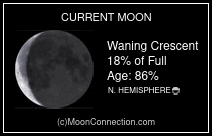The Connecticut coast isn’t known
for its public access. Much of Long Island Sound’s shoreline is privately owned
and challenging to access legally. There are several city and state-owned beaches
and parks, but they’re dwarfed by the amount of private beach associations, mansions,
and manicured lawns. While the public trust
states that Connecticut’s shore belongs to the people, you still have to get to
the water without trespassing (or without getting caught). So when an opportunity
presented itself to fish a private stretch of striper heaven with landowner
permission, I jumped at the chance.
This past weekend I finally
linked up with a family friend after a year or so of talking about fishing
together. Probably like most reading this, Rob is crazy about fishing. He’s caught
trout on the Provo, smallies on the upper Housy and schoolies on the lower
Connecticut, but he had never attempted full-on surfcasting at night for that
next size class of stripers. Rob was determined to change that and recently scored
permission through a childhood friend to access a rocky shoreline that screams
big bass. He texted me some possible dates and we hatched a plan.
What a sight we must have been fully
decked out in surfcasting gear strolling across a great lawn at sunset getting showered by sprinklers. And how refreshing it was to be able to fish a spot like this
without having to sneak in after midnight and constantly look over a shoulder. Once
on the water, we maneuvered a maze of bowling ball-sized rocks until we found boulders to perch on and tossed top water lures to kill time before dark
settled in. When we could no longer see our plugs, I gave Rob a brief tutorial
on how to handle, hook and fish live eels. He had never used this prime striper
bait before; in fact, he told me the only nightmare he could remember having as
a kid involved spearing huge eels. Nothing like a baptism by fire.
Wading up to our waists, we began working the water in front of us that had a left to right swing forming with
the incoming tide. It was a gorgeous summer night with a light breeze. The last quarter of the strawberry moon
hadn’t risen yet and the dark sky aided us in seeing a few shooting
stars. Even better was that there was no one else around. Only one boat passed our field of view the entire time and there wasn’t
another surfcaster for miles. On the flip side, the fish didn't seem to be around either...at first. After about 90 minutes without a touch, we took a
short breather on shore and re-hooked our now dead eels.
Sometimes a quick break can make
all the difference, or at least renew confidence, because within moments of
resuming I saw Rob’s rod double over. It was difficult for me to tell what exactly Rob was dealing with because he didn’t make a sound and the fish didn’t take a
yard of drag for the first half of the fight. But that soon changed as the bass came
in close and bugged out in the shallows. His locked-down drag started paying
out line and the fish moved a good deal of water around. When I finally clicked on my headlamp, there was a thick, healthy bass a rod's length away. It was easily twice the size of his best
striper to that point.
Rob’s reaction to the catch ranks
up there to some of the better I have ever witnessed. I don’t remember seeing
an angler so genuinely happy in that moment. His smile said it all. Rob knew this
was special; that you don’t just waltz into a spot like that, fish at night
with eels for the first time and catch a 30-pound striped bass. It took me many
a night of trial and error to eventually stumble upon a striper in that class. But
I was ecstatic for the guy. We could have went home with a skunking and Rob
would have been more than fine with it, and I could tell he soaked in the info I
shared like a sponge.
That bass bought us another solid
hour of fishing. Both of us, now brimming with confidence, fished hard for one
more fish, a smallish striper in comparison but a decent catch from shore most summer nights. With the hour getting late and a wedding the following day hanging over me, I had to call it quits. Back at his family’s
cottage, we rehashed the tide over a cold beer. As a sign of appreciation, Rob
presented me with a bottle of Irish whiskey he had been aging for some time. He
texted me not long after I left saying that he was going back out solo that
very night, and since then he’s contacted me again about gaining more access along
Connecticut’s striper coast. I have seen his condition before in me and my close
friends; it appears to be early onset of diehard surfcasting syndrome. If not controlled,
it can ruin relationships, careers, and leave you broke and sleep deprived. To
all of you like Rob out there, be forewarned.




























.jpg)



























